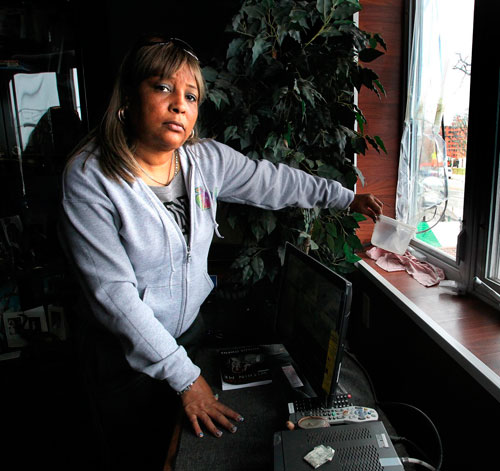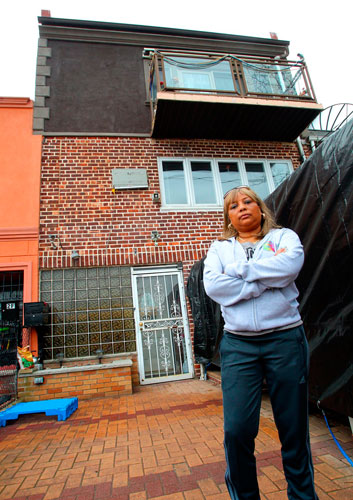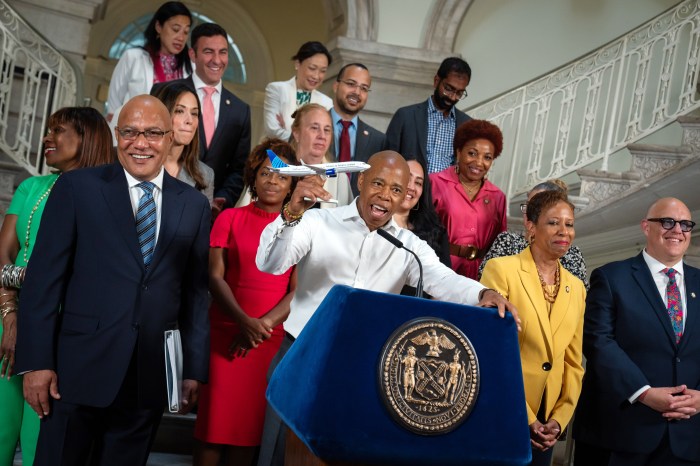Sandy victims have been complaining for years that Build It Back was broken, and now an audit of the city’s superstorm recovery program reveals exactly how the city dropped the ball.
The Mayor’s Office on Housing and Recovery — and private consultants hired to run the federally funded Build It Back program — bounced applicants between staff in a bid to cut costs, repeatedly changed paperwork requirements without alerting applicants, and hired woefully under-qualified caseworkers, according to an audit by Comptroller Scott Stringer.
“New York City’s response to Sandy was a case study in dysfunction,” Stringer said when he released the scathing report on March 31.
The findings come as no surprise to Sandy victims in Southern Brooklyn who are still waiting for assistance.
Mayor DeBlasio, who inherited the flawed program from former Mayor Michael Bloomberg, re-tooled Build It Back in April 2014, hiring a new director for the Housing and Recovery Office and increasing the number of city staffers working in the program. But even after the overhaul folks are still hitting roadblocks, such as a retired corrections officer in Coney Island who is still waiting for reimbursement for repairs she made after the 2012 superstorm.
“I worked my butt off protecting this city for 24 years, and now, when I need help, I can’t get them to answer an e-mail,” said Pam Harris. “I should be on the island of Bali right now, living it up, but I spent my 401-k to get my house back.”
Aid-seekers complained from the get-go that they were being bounced around by program staff who were unresponsive and unfamiliar with their cases. The city originally planned to assign a dedicated caseworker to each applicant, but backed off because it decided that was too expensive, and instead ended up hiring fewer workers than necessary, the audit states.
The city admitted that the multiple caseworkers created problems and said it has since fixed the issue.
Looking back, another victim was skeptical a dedicated caseworker would have improved his experience, because the system was so flawed in other areas.
“I don’t think it would have been any difference, because everything was changing — every two seconds they had something new that they were adding,” said Coney Islander Rocco Brescia, who is waiting for the program to find a contractor to elevate his attached house.
The city routinely changed forms the meet federal requirements but failed to communicate those changes to workers or follow up to ensure they were implemented properly, the audit found. Some forms changed many as eight times in the course of one year, but caseworkers didn’t always make sure old forms were updated with new information, stalling victims’ applications and forcing them to resubmit paperwork, the report stated.
“They keep adding forms, but they don’t tell us they add forms, and we just keep sitting there,” Brescia told the Council in April 2014.
And the consultants the city paid to run the program hired under-qualified caseworkers, who sometimes had only a high-school diploma and no relevant work experience, the audit found.
“That’s really sad,” Harris said. “This is why were not getting anywhere.”
The Office of Housing and Recovery maintains that its consultants were allowed to hire individuals who lacked the required bachelor’s degree in social work if they had sufficient work experience, but the so-called “work experience” often included retail and restaurant work, the audit found.
Harris said not all the workers were duds, though.
“One person that I got to work with a few times was very knowledgeable — I have to give her kudos,” Harris said, referring to a caseworker whom she interacted with between October 2014 and December 2014. “Before that it was sad.”




















